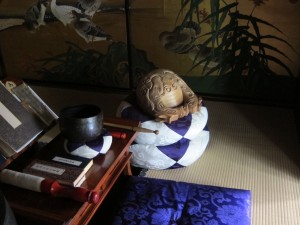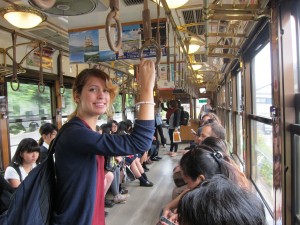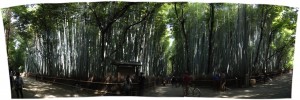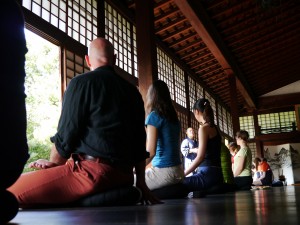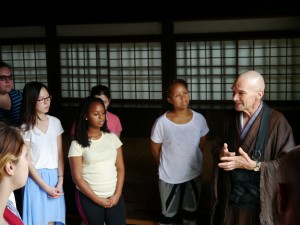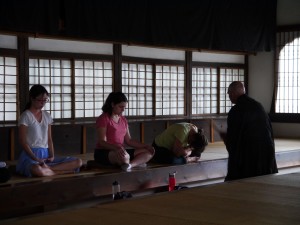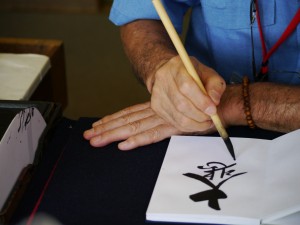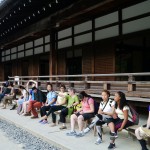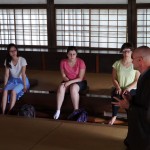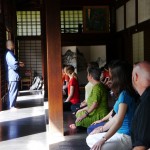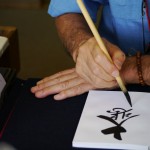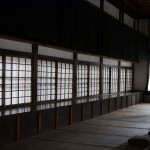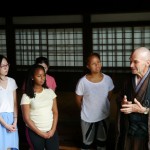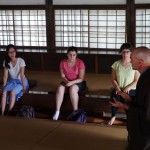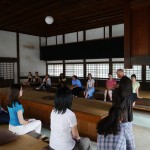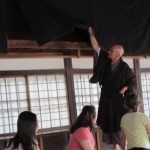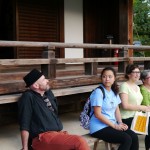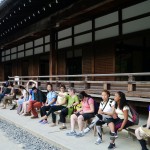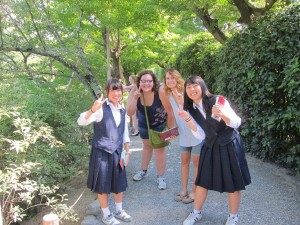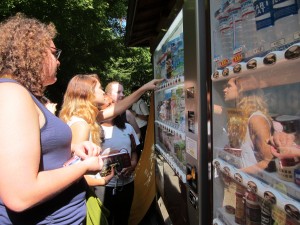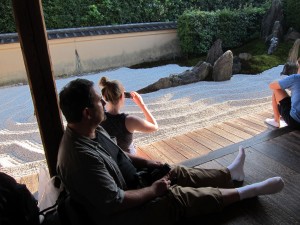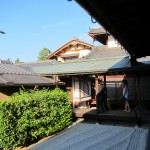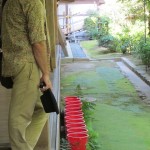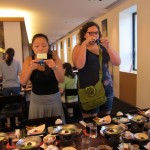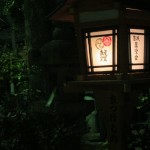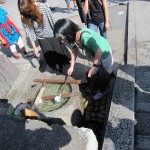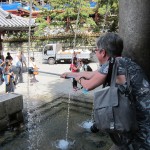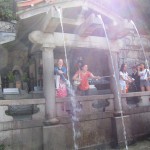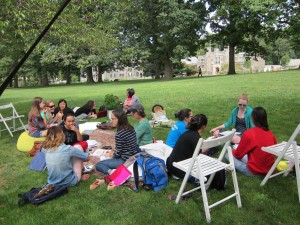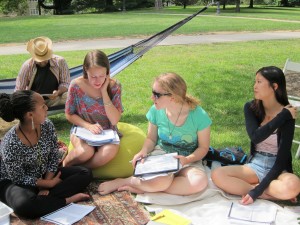Today was our last day at the temple complex of Myōshin-ji. Last night there was a festival at the temple where the bell that hangs outside the Taylor Hall classroom I am teaching in this semester once hung. We rang the bell before left on this trip, and many of the students went to the festival.
We did another round of meditation training this morning with the vice-abbot, Taka Kawakami, learning a bit more about how he sees the connections between psychology
(including MBSR, which the psychology class has been reading about) and traditional Buddhist meditation training. We toured the temple’s gardens, and other spaces, encouraged to experience the spaces as they were designed to be enjoyed, by sitting on the floor in the rooms with only ambient light. The gold screens are warmer in this light, and the garden becomes a carefully framed composition from this vantage point.
After the tour and meditation we enjoyed green tea and sweet rice cookies, and headed back one last time toward Tenryu-ji by trolley, this time to see the bamboo forest at Arayamashima. There is a small shrine there, which features in The Tale of Genji, and where students come to seek success in academic endeavors.
The forest itself has an amazing sound scape, particularly when it is windy as it was in Kyoto this morning. There is the characteristic sound of the wind through the leaves, but also the sound of the trunks clacking against each other. The swaying motion of the trees is hypnotic, particularly from the top of the trail.
We took the trolley back to Myōshin-ji and picked up bentos to eat on the bus to Kumano. It was a five hour trip through the mountains southeast of Kyoto, and we were glad of the bentos and the well packed snack bag carefully toted to the bus by the Snacks Mistress (chocolate and hard candies a hit, the salty rice crackers, not so much). The view of the ocean on the far side was stunning, islands that seemed to float just above the water dotting the bay, then we wound our way back into the mountains.
Tomorrow the day starts with a visit to a Shugendo temple, a couple of hours of hiking and a conversation with Tateishi Kosho, then a three hour drive to Mount Koya.

